Merida's new One-Twenty is a do-it-all mountain bike, sitting in the space between the brand's Ninety-Six XC race bikes and the trail-focused OneForty.
With 130mm of travel (no, that's not a typo), the new bike is aimed at riders who want versatility. The One-Twenty is designed to be a bike that can double up on all-day epics while not embarrassing itself on gnarlier trails.
Merida seems to have given itself quite the task, with the goals of producing a bike that's a "strong climber, perfect ground coverer, daredevil descender, fun packed, affordable and with a simple to look after and reliable top performing design".

This is achieved via modern geometry, with angles that are straight out of the 2023 trail bike recipe book, as well as suspension derived from Merida's Bike of the Year winning longer-travel rigs.
The One-Twenty is alloy only, and sees three models coming to market.
The same alloy frame forms the basis of a budget XC racer, when paired with a shorter-stroke shock and fork. This is aimed at the European market, where more conservative travel numbers may appeal. It sits in the Ninety-Six family, and is dubbed the Ninety-Six Lite.
Merida One-Twenty frame details
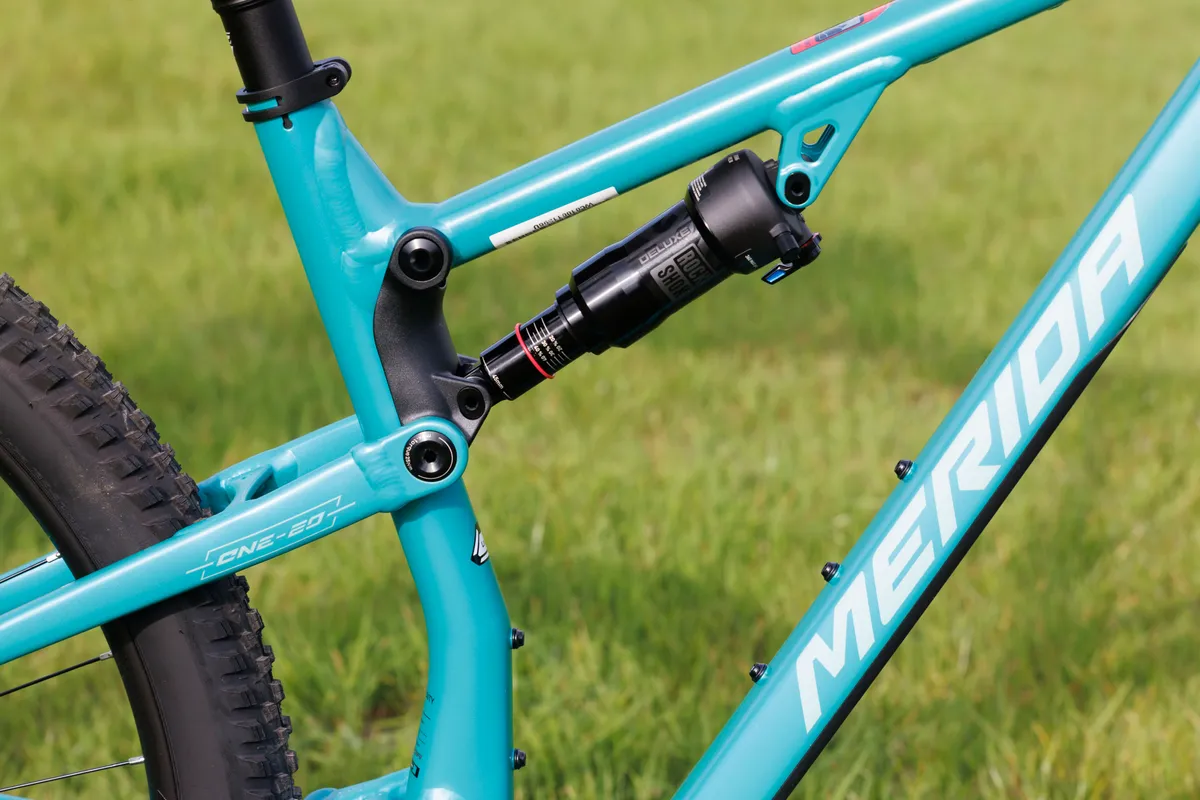
The new One-Twenty sees significant changes over the previous version.
Most notable is the move to Merida's P-FLEX suspension, which allows for a horizontally mounted shock under the top tube and utilises flex engineered into the seatstay and chainstay junction.
This enables Merida to do away with a traditional pivot in this area, which saves weight, adds stiffness, improves durability and reduces necessary maintenance.
While we're talking about flex stays, Merida has reportedly extensively stress-tested the flex area, and says it passed with flying colours. The frames are rated (and warrantied) to 'Level 4' use, which includes enduro racing, should you wish to set times down tracks on your shorter-travel rig.
The suspension details given to us by Merida are fairly typical of trail bikes.
The system is designed to be progressive, with plenty of bottom-out resistance so you can push the shorter-travel bike hard. This, in turn, gives a poppy mid-stroke, so you're encouraged to get the bike airborne at any opportunity.
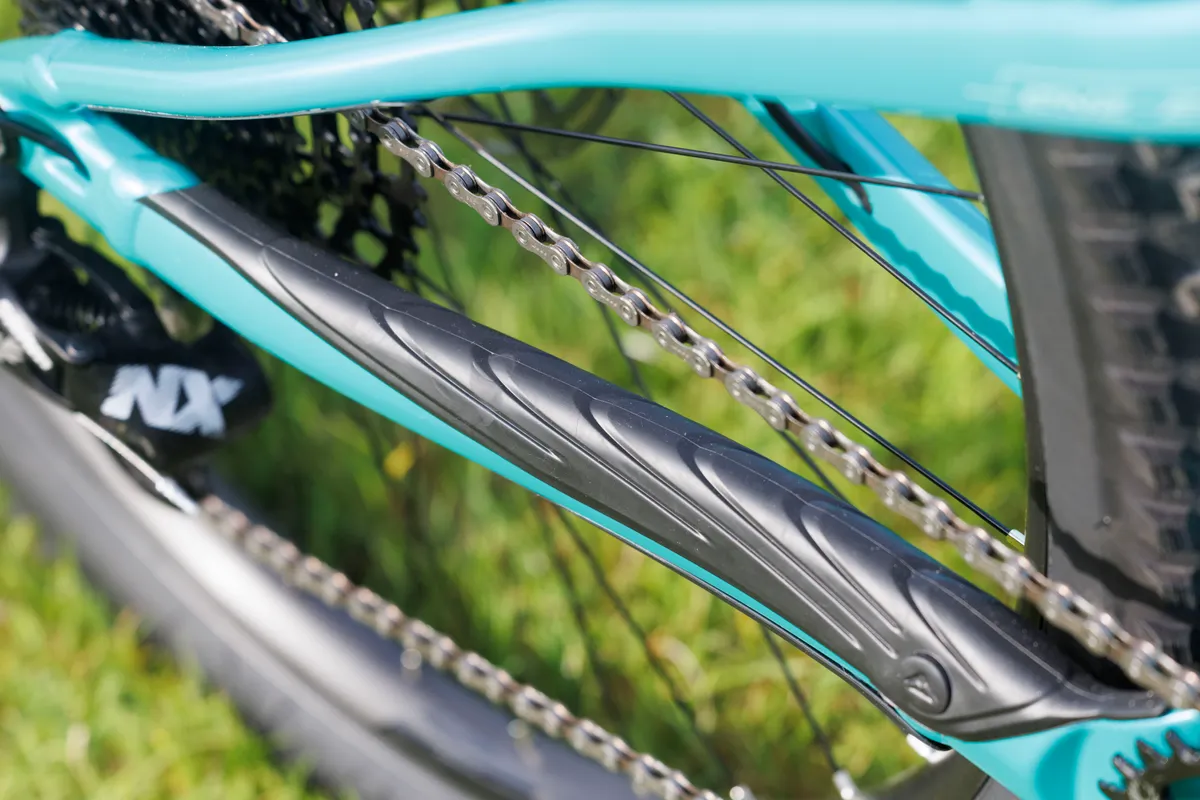
Deep in the travel, the anti-squat is low, so there shouldn't be any harsh pedal kickback, though at around the sag point it should be just over 100 per cent. Therefore, your pedal stroke shouldn't make the rear shock bob through its travel in an energy-inefficient manner.
In terms of anti-rise (the impact of braking on suspension), Merida says it's below 100 per cent for the full travel of the bike. This means the suspension should remain active whenever the brakes are applied (rather than stiffening up and decreasing the bike's ability to deal with impacts when the brakes are on).
Angle of attack
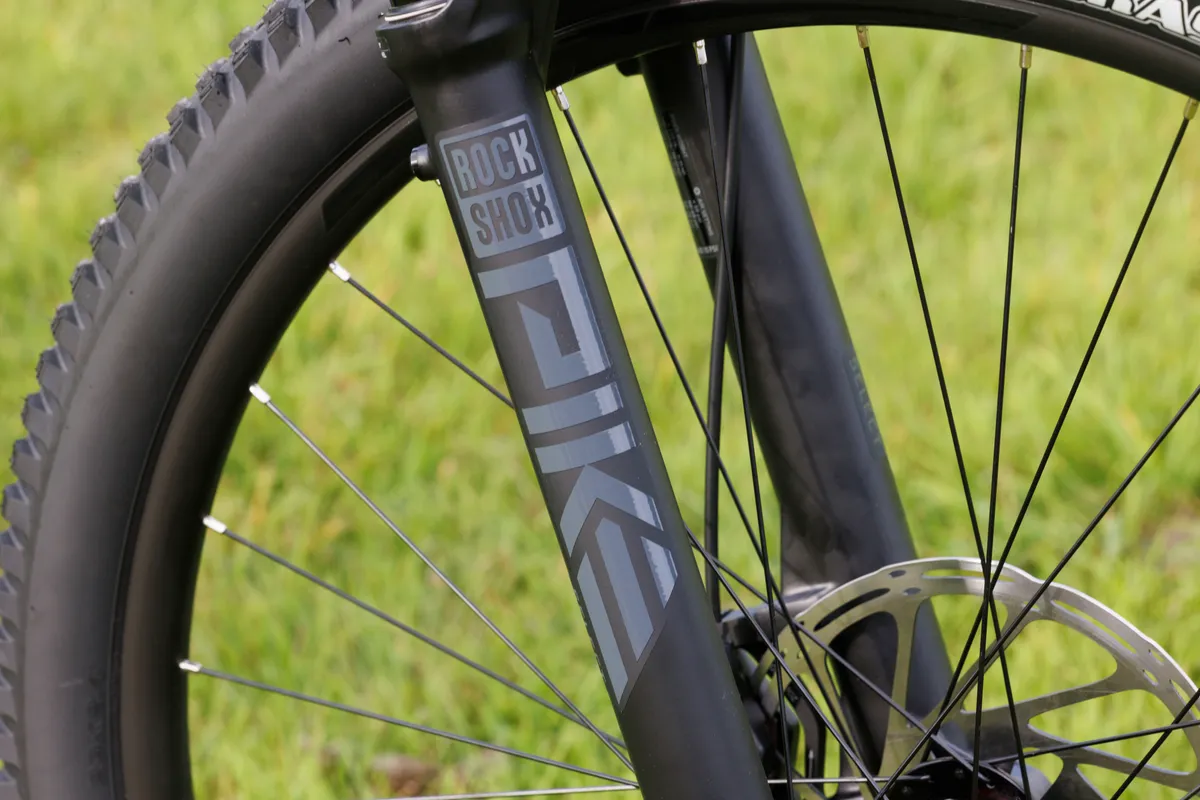
When it comes to the shape of the bike, it's no surprise to see some rather interesting angles from Merida, certainly if you kept abreast of the One-Forty and One-Sixty bikes launched a year ago.
The seat angle, in particular, is steep at 78.5 degrees (and it's steeper on the Ninety-Six Lite, covered below), while the head angle is a little more middle-of-the-road, at 66 degrees. That's still 1.3 degrees slacker than the old version.
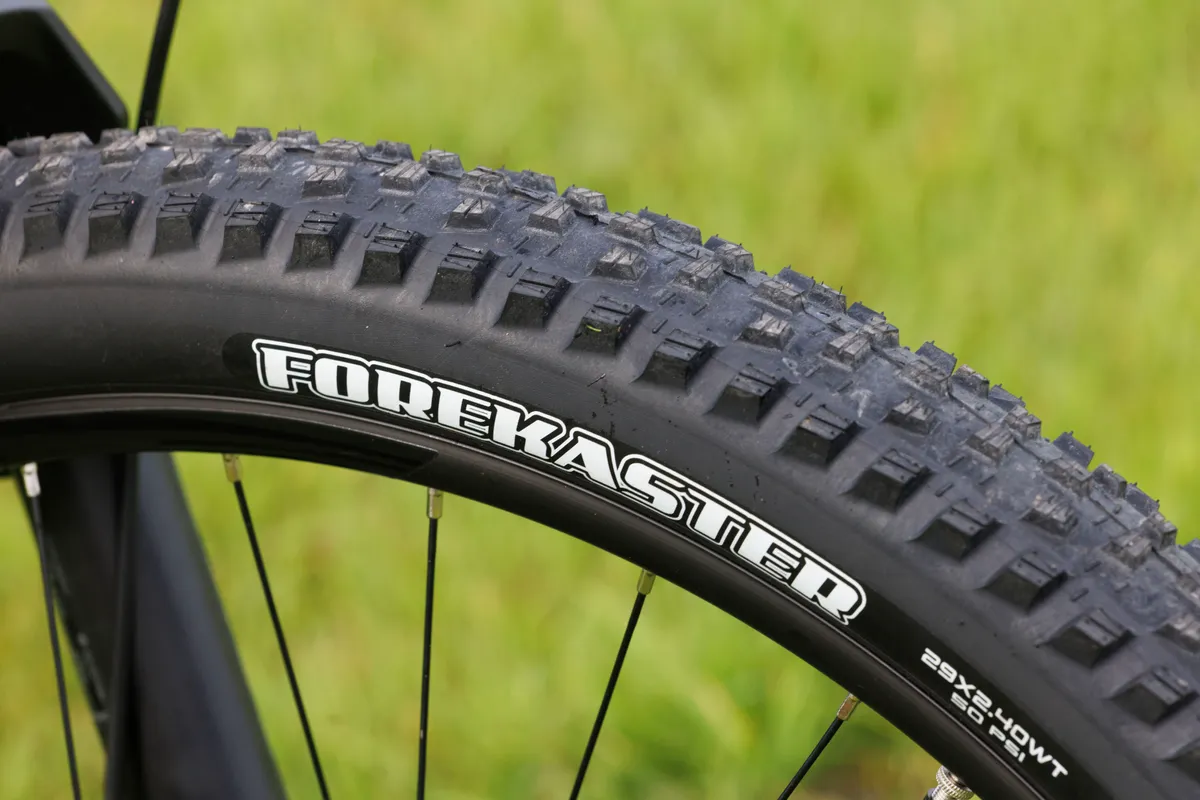
Reach is 30mm longer than the outgoing model, but chainstays remain the same at 435mm.
| FRAME SIZE | XSHORT | SHORT | МID | LONG | XLONG |
|---|---|---|---|---|---|
| Tyre sizes (in) | 29 | 29 | 29 | 29 | 29 |
| Seat tube (mm) | 400 | 410 | 425 | 445 | 470 |
| Тop tube (mm) | 548 | 569 | 590 | 611 | 632 |
| Сhainstay length (mm) | 435 | 435 | 435 | 435 | 435 |
| Нead tube angle (degrees) | 66 | 66 | 66 | 66 | 66 |
| Seat tube angle (degrees) | 78.5 | 78.5 | 78.5 | 78.5 | 78.5 |
| Вottom bracket drop (mm) | 40 | 40 | 40 | 40 | 40 |
| Нead tube (mm) | 95 | 100 | 105 | 110 | 115 |
| Fork length (mm) | 541 | 541 | 541 | 541 | 541 |
| Reach (mm) | 425 | 445 | 465 | 485 | 505 |
| Stack (mm) | 604 | 609 | 613 | 618 | 622 |
| Wheelbase (mm) | 1,155 | 1,177 | 1,199 | 1,221 | 1,243 |
| Standover height (mm) | 748 | 750 | 752 | 754 | 756 |
What is key to the bike's shape, though, is the seat-tube lengths.
In keeping with its longer-travel bikes, Merida has kept them short, believing this enables riders to pick their bike size based on the handling they want (via reach), rather than how long their legs are (seat-tube length).
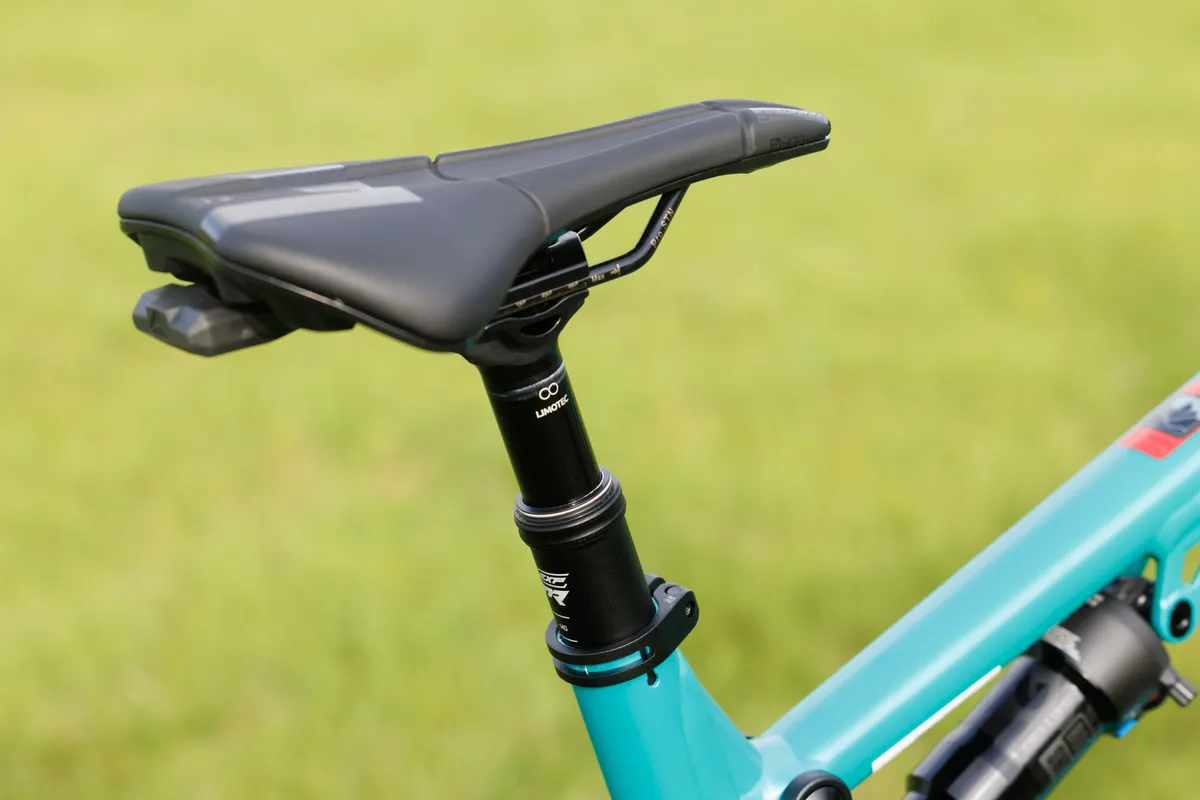
The short seat tubes are paired with relatively long dropper posts, so it's possible to pick and choose whether you want a shorter bike that might be more agile (the jury's out on that), or a longer bike that's theoretically more stable.
Additional frame and finishing details include cables that route via the top of the headset, built by Acros for Merida. There's also plenty of frame protection on the down tube and chainstays.
Bolts are all adjusted with a single tool and the majority can be tightened with the removable rear axle lever's stepped hex keys (4mm and 6mm).
There's a 34.9mm seat tube, a port in the down tube to aid cable routing and a threaded BB for which there's an ISCG05 adaptor, too.
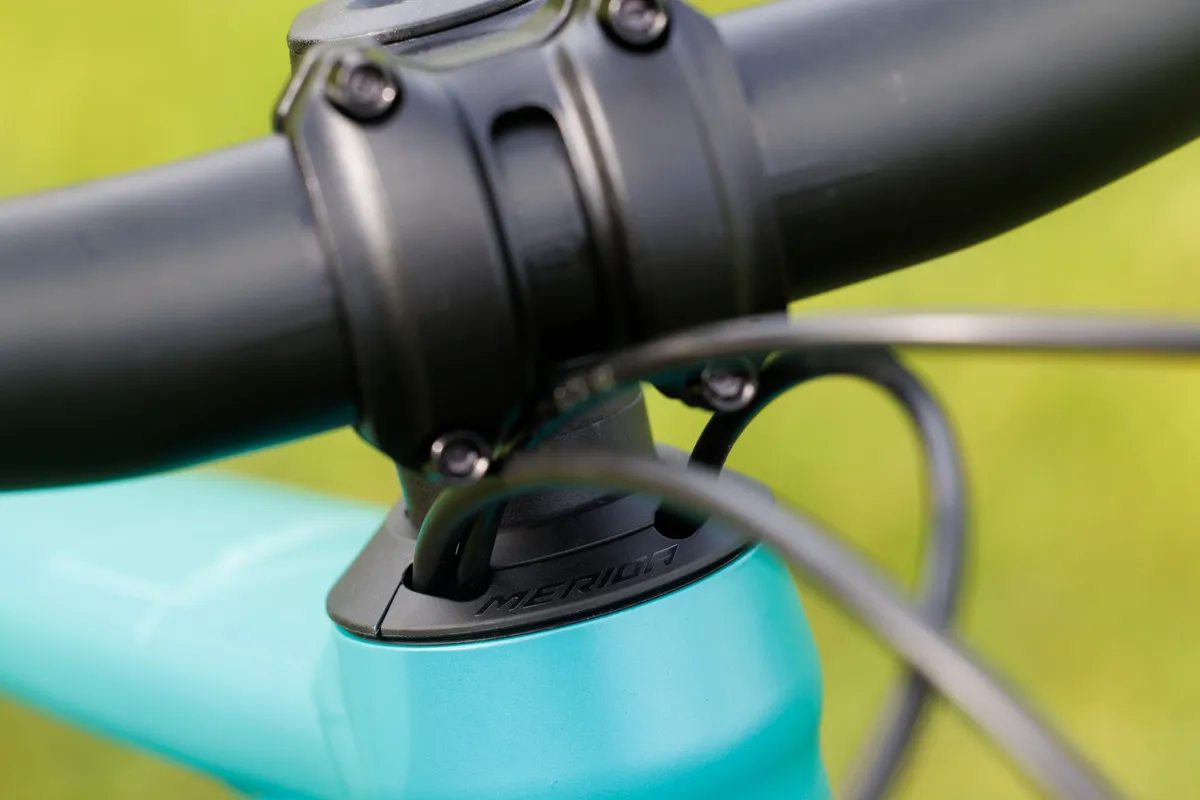
Merida One-Twenty range details
Merida will offer three models of the One-Twenty – the 700, 600 and 300.
Merida One-Twenty 700
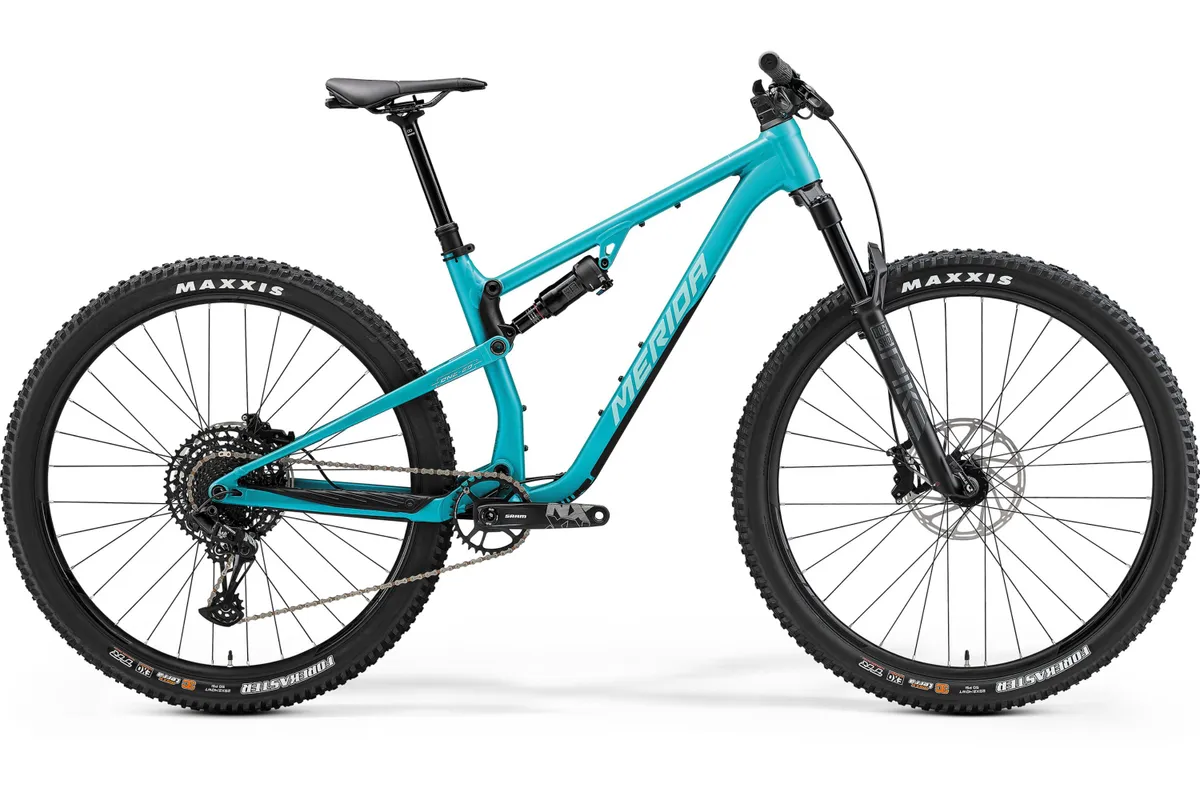
This is the top-end model of the bike. It comes with a 130mm RockShox Pike Select fork, and a RockShox Deluxe Select shock.
The drivetrain is largely SRAM NX Eagle, with a 10-50t cassette, while SRAM also provides the stopping, via its DB8 brakes.
Merida-branded rims hold 29x2.4in Maxxis Forekaster tyres – they're triple-compound with an EXO casing. Merida's own dropper post is fitted, with lengths ranging from 150 to 200mm across the five sizes.
It'll cost £3,100 in the UK, with EU pricing dependant on your local distributor.
Merida One-Twenty 600
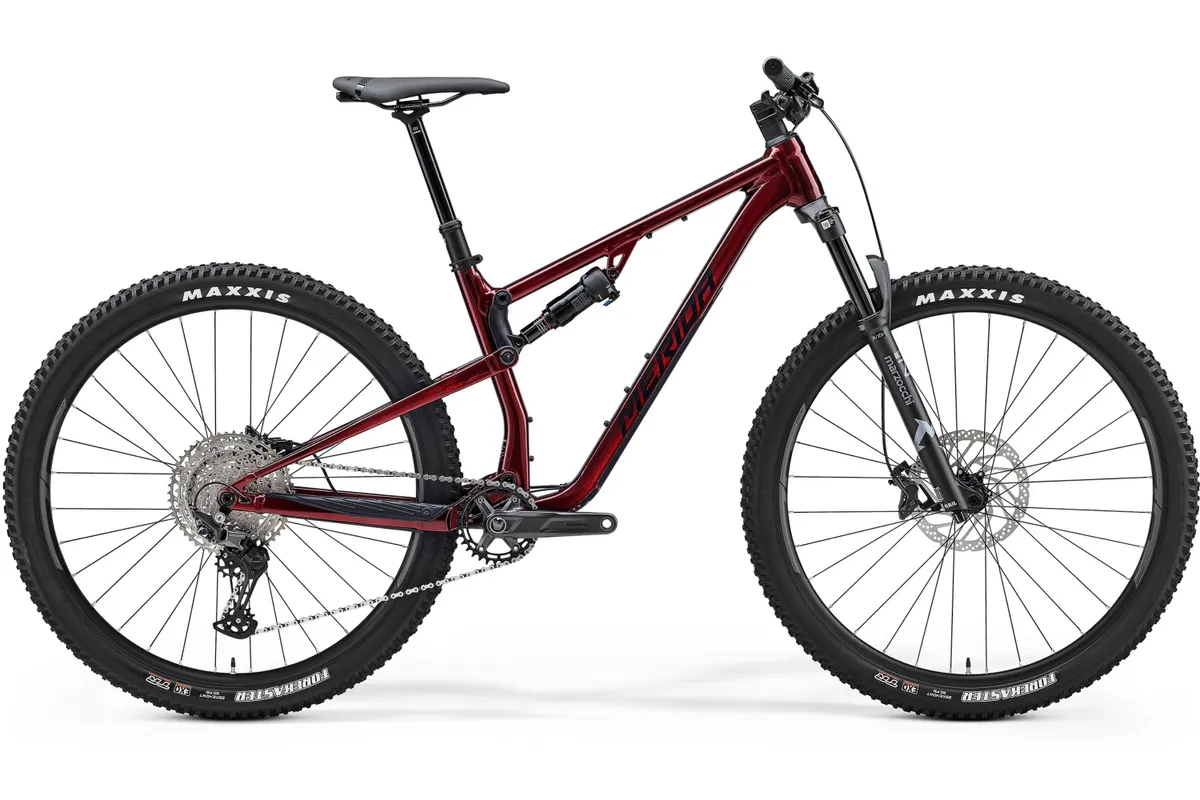
The One-Twenty 600 appears to be the pick of the bunch, with a decent price and well-specced components.
The finishing kit, is similar to the 700 model, though the tyres are dual- rather than triple-compound and the rims are a touch cheaper.
However, the drivetrain is a near-full Shimano Deore 12-speed group, while you also get the excellent Deore brakes.
Suspension up-front is a Marzocchi Z2, which is a firm budget favourite here, while the same Deluxe Select shock is used.
In the UK this bike will retail at £2,500.
Merida One-Twenty 300 details

The most budget-friendly model in the range receives SR Suntour suspension in the shape of an XCR34 fork and an Edge Plus shock.
Shimano Cues is the drivetrain choice – it's a budget-friendly groupset that has durability as its core goal.
The MT200 brakes from Shimano are reliable at this £1,900 price point, too.
Merida Ninety-Six Lite
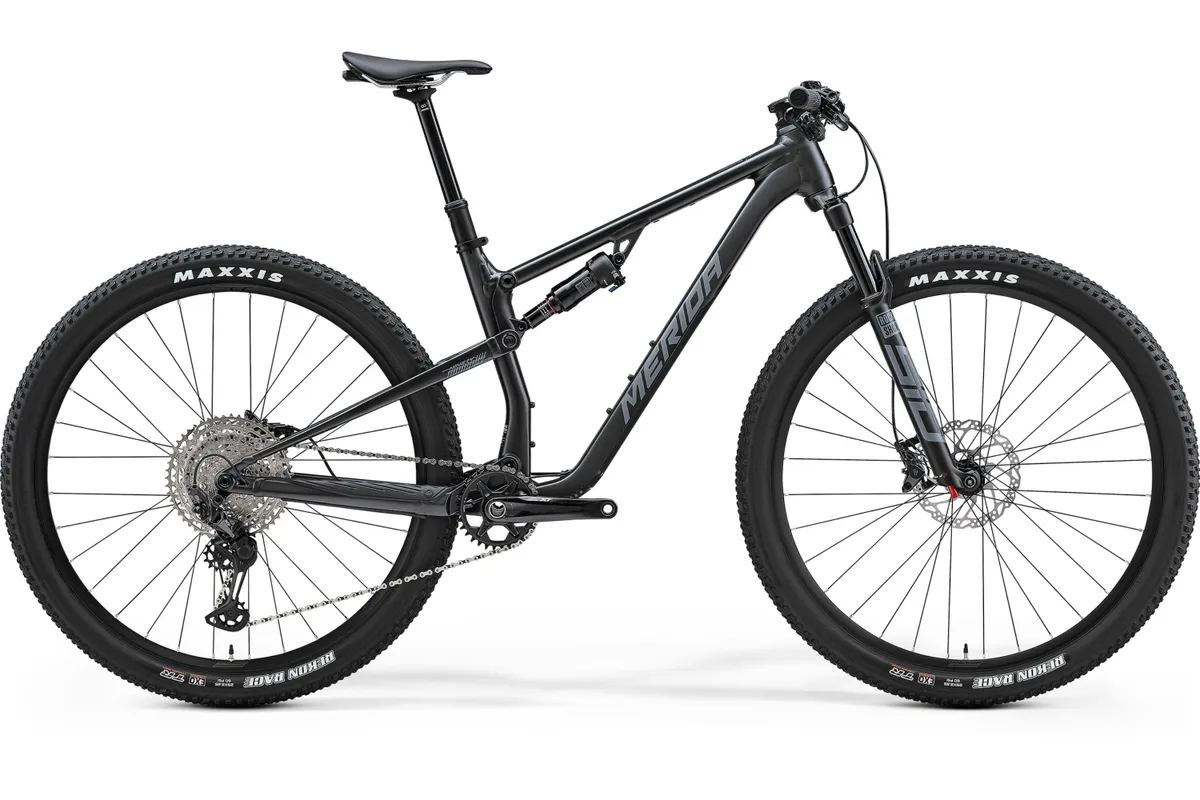
Merida has borrowed the One-Twenty frame and lent it to the Ninety-Six family in order to give it a more pocket-friendly sibling, the Ninety-Six Lite.
By shortening the shock stroke, the travel is limited to 110mm, and when paired with a 110mm fork, it produces a more cross-country bike feel.
The result is a 67-degree head angle and a remarkably steep 79.5-degree seat angle, which should make the steepest of climbs much less threatening.
While the One-Twenty models feature components that are more trail-friendly (bigger brakes, wider bars), the Ninety-Six Lite gets two-piston stoppers, narrower bars and fast-rolling rubber.
The goal, according to Merida, is to appeal to riders who want a bike suited to marathon-style rides, or who want to dip their toes into XC racing without splashing out on a super-light carbon race whippet.
| FRAME SIZE | XSHORT | SHORT | МЮ | LONG | XLONG |
|---|---|---|---|---|---|
| Tyre sizes (in) | 29 | 29 | 29 | 29 | 29 |
| Seat tube (mm) | 400 | 410 | 425 | 445 | 470 |
| Тop tube (mm) | 545 | 566 | 587 | 606 | 629 |
| Сhainstay length (mm) | 435 | 435 | 435 | 435 | 435 |
| Нead tube angle (degrees) | 67 | 67 | 67 | 67 | 67 |
| Seat tube angle (degrees) | 79.5 | 79.5 | 79.5 | 79.5 | 79.5 |
| Вottom bracket drop (mm) | 47 | 47 | 47 | 47 | 47 |
| Нead tube (mm) | 95 | 100 | 105 | 110 | 115 |
| Fork length (mm) | 520 | 520 | 520 | 520 | 520 |
| Reach (mm) | 435 | 455 | 475 | 495 | 515 |
| Stack (mm) | 596 | 601 | 605 | 610 | 614 |
| Wheelbase (mm) | 1,149 | 1,171 | 1,193 | 1,215 | 1,237 |
| Standover height (mm) | 741 | 743 | 745 | 747 | 749 |
Merida Ninety-Six Lite models
Two bikes make up the pocket-friendly XC racer range, a Shimano XT build and a Deore-based model.
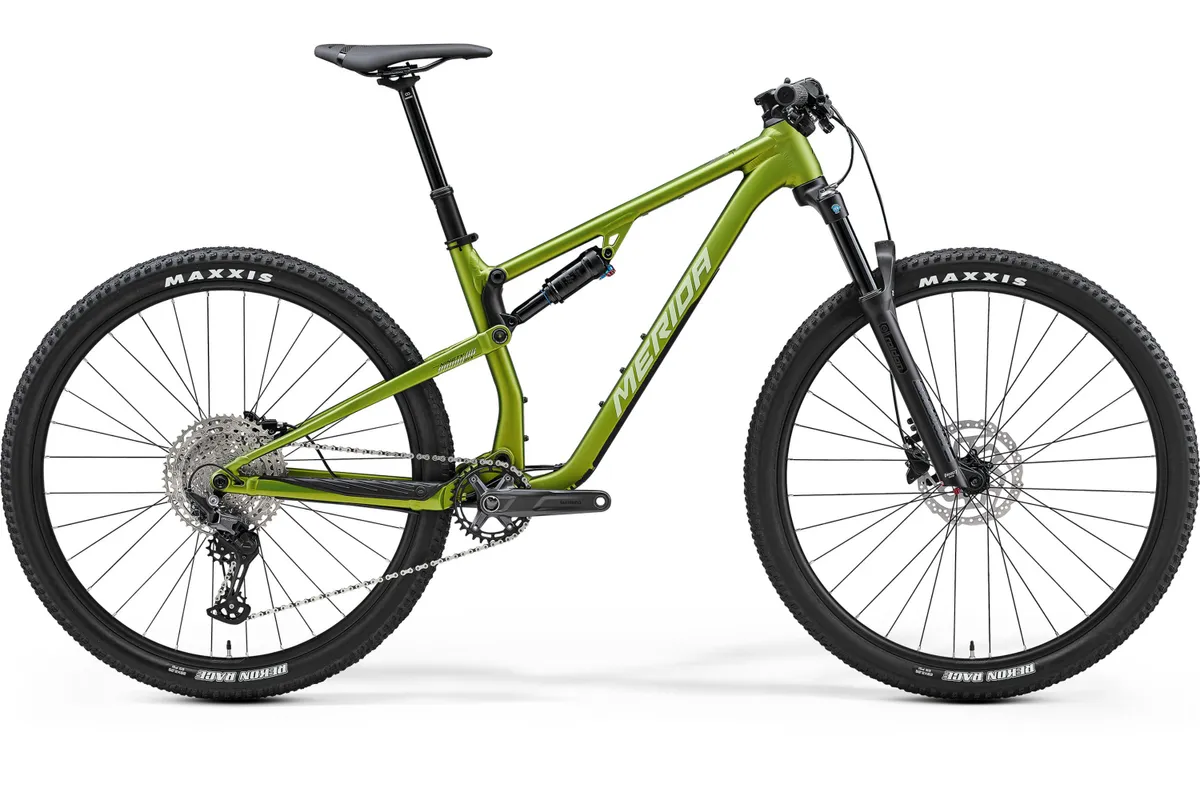
Merida Ninety-Six Lite XT Edition details
As the name suggests, Shimano's XT groupset features here, alongside Deore brakes.
Up-front, there's a lightweight RockShox SID SL fork with 110mm of travel, while a Deluxe Select shock controls the rear.
Maxxis' 3C EXO Rekon Race tyres are intended to keep things rolling quickly.
Merida Ninety-Six Lite 400 details
Suntour's Raidon34 R-2CR fork heads up this build, with a matching shock at the rear.
Shimano's Deore 12-speed groupset provides the drive, while MT200 brakes bring it all to a halt.
Once again, there's a Rekon Race tread, but the tyre has a cheaper wire bead.
Merida One-Twenty 700 initial ride impressions
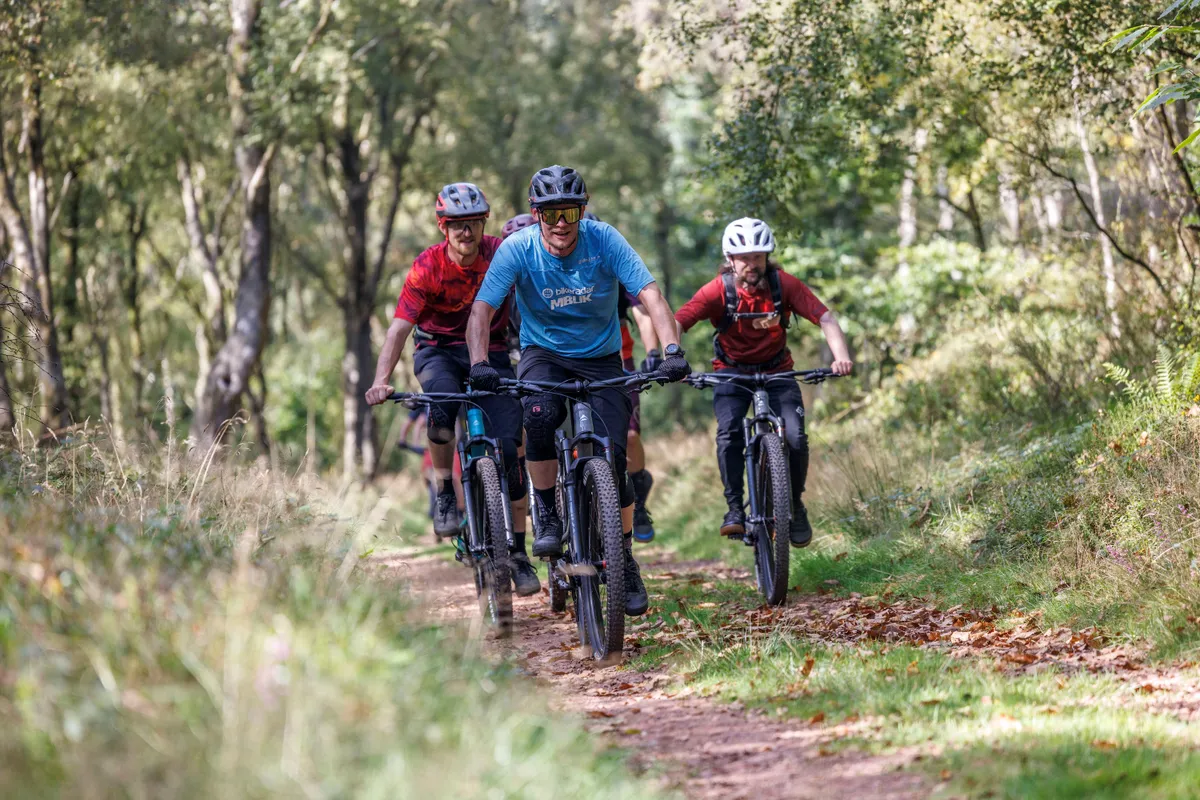
I rode the top-line One-Twenty for a day on Exmoor during the bike's co-launch with the One-Sixty FR.
The conditions were mercifully dry (a rare sight this summer in the UK) and the trails dusty and buff – perfect territory to get to grips with the bike.
As I found with the One-Forty, climbing manners on Merida's bikes are second to none. The suspension system seems largely immune to pedal-induced bob, until you really start mashing the pedals.
If you want to completely remove any shock movement, there's a dial on the shock.
The seated position is good, with the steep seat tube angle placing your hips centrally over the bottom bracket.
The front end is a touch shorter than on the longer-travel bikes. As such, there's a hint less of the rangey feel the bigger bikes have, but the One-Twenty doesn't feel cramped.

Adding to the zippy feel are the Forekaster tyres from Maxxis. Their mid-depth, mid-aggression tread rolls faster than a 'true' trail tyre, while still giving just enough bite to scrabble up marginal climbs.
The rims are wide, and so with 2.4in rubber I was happy running moderately low pressures to further enhance grip.
On the way back down, the One-Twenty shows its true colours.
The tyres pick up speed quickly, and a few jabs at the pedals will yet further increase speed.
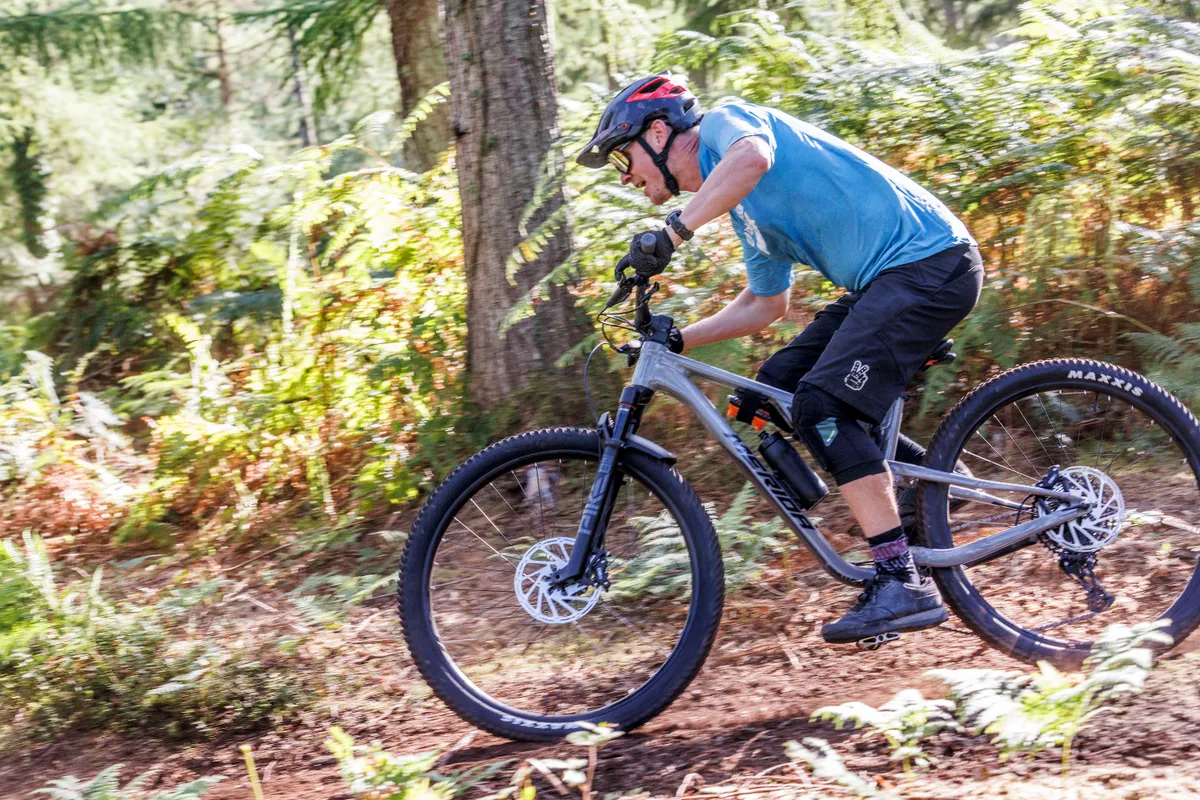
I appreciated the Pike's sturdy chassis when I encountered chunkier trails, as well as the progression from the rear suspension. It's supportive and then protective as you reach the later stages of its travel.
While not overly slack, the geometry doesn't seem to hold the bike back – certainly if you remember this is one of the brand's shorter-travel options.
There's enough front-end length to give confidence on faster trails, while once you've learnt the limits of the Forekaster, cornering is a hoot, with the bike displaying plenty of agility.
I have the Merida One-Twenty 700 in for a full review, so look out for that soon.
undefinedundefinedundefinedundefinedundefinedundefinedundefinedundefinedundefinedundefinedundefinedundefinedundefinedundefinedundefinedundefinedundefinedundefinedundefinedundefinedundefinedundefinedundefinedundefinedundefinedundefinedundefinedundefinedundefinedundefinedundefinedundefinedundefinedundefinedundefinedundefinedundefinedundefinedundefinedundefinedundefinedundefinedundefinedundefinedundefinedundefinedundefinedundefinedundefinedundefinedundefinedundefinedundefinedundefinedundefinedundefinedundefinedundefinedundefinedundefinedundefinedundefinedundefinedundefinedundefinedundefinedundefinedundefinedundefinedundefinedundefinedundefinedundefinedundefinedundefinedundefinedundefinedundefinedundefinedundefinedundefinedundefinedundefinedundefinedundefinedundefinedundefinedundefinedundefinedundefinedundefinedundefinedundefinedundefinedundefinedundefinedundefinedundefinedundefinedundefinedundefinedundefinedundefinedundefinedundefinedundefinedundefinedundefinedundefinedundefinedundefinedundefinedundefinedundefinedundefinedundefinedundefinedundefinedundefinedundefinedundefinedundefinedundefinedundefinedundefinedundefinedundefinedundefinedundefinedundefinedundefinedundefinedundefinedundefinedundefinedundefinedundefined